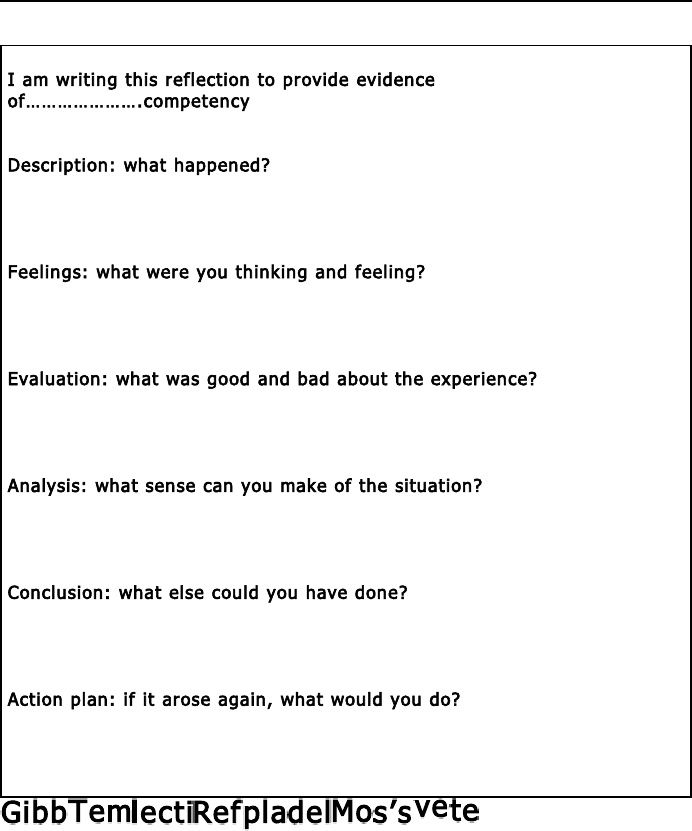Laurie's Blogs.

Dec 2020
Reflective Practice – Learning to Practice as a Professional

This week’s topic is about reflective practice. This is the practice of using reflection as a means of learning from experiences to advance one’s expertise, but also as a means to problem solve through complex problems that arise in clinical practice.
Reflective practice is something most people first formally encounter at university. This may be reflecting on a patient case, or an elective, or other experience. Reflection has emerged as a reoccurring theme in many allied health professions in the last several decades.
In physical therapy, reflection has been used improve patient care, better support clinical supervision, improve collaboration, and advance clinical reasoning. It is often helpful to use a framework to guide your reflective practice. One is provided below:
What to reflect on
Anything! Most reflections are on things that go wrong. These situations stay in one’s head and force us to begin to think about whether they could have done anything differently. For example:
- Postoperative complications
- Missed diagnosis
- A dissatisfied patient
- Failed procedure
However, reflecting on things that went well can often be more rewarding and be just as useful. It can build confidence and help you to repeat it again on another occasion. For example:
- A well-managed case
- An interesting seminar, conference, lecture, etc.
- A client thank you note
- A difficult case that turned out favourably
Stages of reflection
1. What, where, and who – the situation
Think about the situation in detail. What exactly happened? In what order? What part did you play? What was the final outcome?
2. How did it make you feel – your emotional state
What were you thinking? How did you feel? Being reflective about these things can help you to understand why things happened as they did, and recognize similar situations in the future.
3. Why did it happen – making sense of the situation
How did the situation, yourself, and others interact at the time? Here you reflect on what went well and/or what didn’t go so well.
4. Could you have done anything differently – critical review and development of insight
With the help of hindsight how would you have managed the situation differently? What could you have tried? But also, what worked? What did you do that went well?
5. What will you do differently in the future – how will this change your practice
This may be the most important stage in reflecting. Pulling together everything you have thought of before to learn, change your own practice, and improve. So, not just regarding the specific situation / case, but rather, are there transferable knowledge or skills that you can use in the future?
6. Re-enforcement – what happens when you put this into practice
Test your reflections. If a comparable situation arises, do you change what you do or how you respond?
How to make the best use of reflective practice
Purposely challenge yourself to mentally think about situations / cases over the next couple of days. Remember, you can reflect not only on your own experiences, but from the mistakes or successes of others.
Conclusion
The benefits of reflecting are clear. Through practice you will develop your own skills and become a better clinician and a better learner.

References:
1. Koshy K, Limb C, Gundogan B, Whitehurst K, Jafree DJ. Reflective practice in health care and how to reflect effectively. Int J Surg Oncol (N Y). 2017 Jul;2(6):e20.
2. Ziebart C, MacDermid JC. Reflective Practice in Physical Therapy: A Scoping Review. Phys Ther. 2019 Aug 1;99(8):1056-1068.

